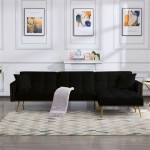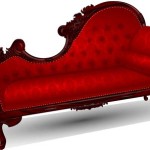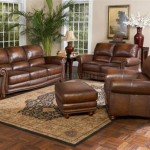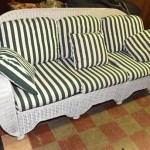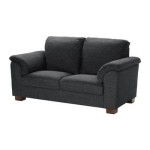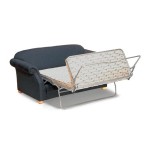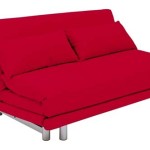Wingback Sofas and Chairs: A Timeless Elegance in Egyptian Interiors
Wingback sofas and chairs have a rich and enduring history, evolving from practical necessities in draughty castles to iconic pieces of furniture admired for their aesthetic appeal and comfort. In Egypt, the popularity of wingback designs reflects a growing appreciation for classic styles that blend seamlessly with modern living, offering both comfort and a touch of sophistication to homes and offices.
The wingback design, characterized by its prominent "wings" extending from the back of the chair or sofa, was initially conceived to provide warmth and protection from drafts surrounding fireplaces. These wings served as barriers, trapping heat and shielding the occupant from cold air currents. Over time, as central heating systems became more prevalent, the functional aspect of the wings diminished, but their distinctive form remained, solidifying the wingback's place as a design classic.
Today, wingback sofas and chairs are valued for their timeless elegance and ability to create a focal point in any room. They offer a comfortable and supportive seating experience, making them ideal for reading, relaxing, or entertaining guests. The broad range of available styles, fabrics, and finishes ensures that a wingback piece can be found to complement any interior design scheme, from traditional to contemporary.
In Egypt, the demand for wingback furniture is being driven by a desire for comfortable yet stylish living spaces. The combination of classic design and modern manufacturing techniques allows for the creation of high-quality pieces that are both durable and aesthetically pleasing. Local artisans and furniture manufacturers are increasingly incorporating wingback designs into their collections, catering to a growing market that appreciates the unique charm and lasting appeal of these classic pieces.
Understanding the Anatomy of Wingback Furniture
The construction of a wingback sofa or chair is crucial to its overall comfort, durability, and aesthetic appeal. A solid frame, typically made of hardwood, forms the foundation of the piece. This frame provides the necessary support and stability for the upholstery and cushioning. The quality of the frame directly impacts the longevity of the furniture.
Upholstery is another key aspect of wingback furniture. The choice of fabric significantly affects the look and feel of the piece. Popular choices include linen, velvet, leather, and various blends, each offering different textures, colors, and levels of durability. The fabric is carefully stretched and secured to the frame, ensuring a smooth and even surface. The upholstery process requires skilled craftsmanship to achieve a professional and aesthetically pleasing finish.
Cushioning plays a vital role in the comfort of a wingback sofa or chair. High-density foam, down feathers, or a combination of both are commonly used to provide a plush and supportive seating experience. The quality of the cushioning materials directly affects the comfort and longevity of the piece. Properly constructed cushions will maintain their shape and provide consistent support over time.
The wings themselves are an integral part of the design and require careful attention to detail. They are typically padded and upholstered to match the rest of the piece, creating a cohesive and visually appealing aesthetic. The shape and size of the wings can vary, influencing the overall style and character of the furniture.
Finally, the legs of the wingback sofa or chair provide support and contribute to the overall design. Legs can be made from wood, metal, or other materials, and they can be finished in a variety of styles, from simple and understated to ornate and decorative. The choice of legs can significantly impact the overall aesthetic of the piece, complementing the upholstery and frame.
Egyptian manufacturers are increasingly paying attention to these details, sourcing high-quality materials and employing skilled artisans to create wingback sofas and chairs that meet the demands of a discerning clientele. The result is a range of furniture that combines timeless design with modern comfort and durability.
Wingback Styles and Their Suitability for Egyptian Homes
The versatility of wingback designs allows them to seamlessly integrate into a wide variety of interior styles, from traditional to contemporary. In Egypt, where both modern and classic aesthetics are popular, wingback sofas and chairs offer a way to blend these styles and create harmonious living spaces.
Traditional wingback styles are characterized by their classic shapes, often featuring curved lines, rolled arms, and decorative details such as nailhead trim or button tufting. These styles are well-suited for formal living rooms or studies, adding a touch of elegance and sophistication to the space. Fabrics such as velvet, damask, or brocade are often used to enhance the traditional look, creating a luxurious and timeless feel.
Transitional wingback styles blend traditional and modern elements, offering a more versatile and adaptable design. These styles often feature cleaner lines, simpler silhouettes, and a more streamlined look. Fabrics such as linen, cotton, or leather are commonly used to create a more relaxed and contemporary feel. Transitional wingback sofas and chairs can work well in a variety of spaces, from living rooms to bedrooms.
Modern wingback styles embrace minimalist design principles, featuring clean lines, geometric shapes, and a focus on functionality. These styles often incorporate innovative materials and manufacturing techniques, creating a sleek and contemporary look. Fabrics such as microfiber, synthetic blends, or even bold patterned fabrics can be used to create a striking and modern statement. Modern wingback sofas and chairs are well-suited for contemporary apartments or homes with a minimalist aesthetic.
In Egyptian homes, the choice of wingback style often depends on the overall design of the space and the personal preferences of the homeowner. Traditional styles are popular in homes with a more classic or formal aesthetic, while transitional and modern styles are often favored in more contemporary settings. Regardless of the style chosen, the wingback sofa or chair can serve as a focal point in the room, adding a touch of elegance and sophistication.
Furthermore, the choice of fabric and color can significantly impact the overall look and feel of the wingback piece. In Egypt's warm climate, lighter fabrics such as linen or cotton are often preferred, as they are more breathable and comfortable. Neutral colors such as beige, gray, or white are also popular choices, as they can be easily incorporated into a variety of color schemes. However, bolder colors and patterns can also be used to create a more dramatic and eye-catching effect.
Egyptian furniture manufacturers are increasingly offering a wide range of wingback styles, fabrics, and finishes, catering to the diverse tastes and preferences of the local market. This allows homeowners to find the perfect wingback sofa or chair to complement their existing décor and create a comfortable and stylish living space.
Factors to Consider When Purchasing Wingback Furniture in Egypt
When purchasing wingback sofas and chairs in Egypt, several factors should be considered to ensure that the chosen piece is both aesthetically pleasing and durable. The quality of materials, construction, and craftsmanship are all crucial to the longevity and overall value of the furniture.
Firstly, the frame material is a critical factor. Hardwood frames, such as beech or oak, are generally considered to be the most durable and long-lasting option. Softwood frames, such as pine, may be less expensive but are also less resistant to wear and tear. When inspecting a wingback sofa or chair, it is important to check the frame for any signs of damage or weakness. The frame should be sturdy and well-constructed, without any visible cracks or loose joints. It's always preferable to ask the seller about the type of wood used in the frame construction.
Secondly, the upholstery fabric should be carefully considered. The choice of fabric will depend on personal preferences, lifestyle, and the overall aesthetic of the room. Durable and stain-resistant fabrics such as leather, microfiber, or synthetic blends are ideal for high-traffic areas or homes with children or pets. More delicate fabrics such as velvet or silk may be better suited for formal living rooms or bedrooms where they will be less exposed to wear and tear. It is important to check the fabric for any signs of damage or imperfections, such as tears, stains, or fading. The fabric should be tightly woven and securely attached to the frame. The "rub count" of the fabric, which indicates its resistance to abrasion, is a useful factor to consider.
Thirdly, the cushioning should provide adequate support and comfort. High-density foam or a combination of foam and down feathers are commonly used in wingback sofas and chairs. The cushioning should be firm enough to provide support but also soft enough to be comfortable. It is important to check the cushions for any signs of sagging or flattening. The cushions should maintain their shape and provide consistent support even after prolonged use. Asking about the density of the foam is a reliable way to gauge the cushion's longevity.
Fourthly, the craftsmanship of the piece is a crucial indicator of its overall quality. The stitching should be neat and even, without any loose threads or frayed edges. The upholstery should be smooth and wrinkle-free. The legs should be securely attached to the frame and should be able to support the weight of the furniture without wobbling. Looking for furniture from reputable brands or skilled artisans in Egypt can increase the chances of purchasing a well-crafted piece.
Finally, consider the size and proportions of the wingback sofa or chair in relation to the space where it will be placed. Measure the available space carefully and choose a piece that is appropriately sized. A wingback sofa that is too large for a small room will overwhelm the space, while a wingback chair that is too small for a large room will look out of place. Consider carefully the dimensions and the overall design of the room before making a purchase.
By carefully considering these factors, buyers in Egypt can make informed decisions and purchase wingback sofas and chairs that will provide years of comfort, style, and enjoyment. The timeless elegance of the wingback design, combined with the quality of materials and craftsmanship, makes these pieces a worthwhile investment for any home.

Leeds Wingback Chair Linen Chairs In Cairo Walls Nation Egy Egypt

Canyon Sauvage Wingback Chair Western Style Leather Fine

Traditional Vintage Wingback Chair Wood Fabric Seating Wing Back Fan Lounge Mid Century Modern English Set High Israel

Vintage Heritage Traditional Queen Anne Style Wingback Chairs Pair

Wingback Chair In Yellow Wool And Elm Attributed To Gustav Axel Berg Sweden 1940s For At Pamono

Wingback Chair In Yellow Wool And Elm Attributed To Gustav Axel Berg Sweden 1940s For At Pamono

Custom Wing Back Chair In Ivory Taupe Crewel Style Upholstery

Vintage Tufted Leather Wingback Chair In Camel Brown Industrial Artifacts

Sold Reupholstered Wingback Chair With Turkish Kilim Rug Leather And Cowhide Made To Order

Custom Wing Back Chair In Ivory Taupe Crewel Style Upholstery

